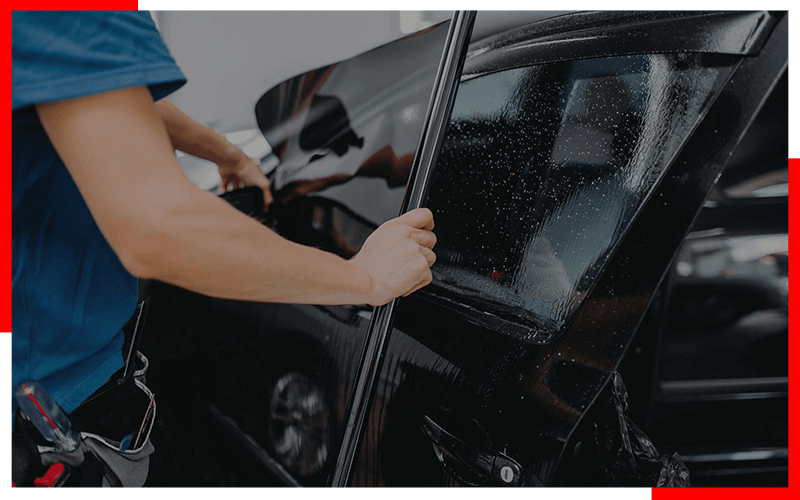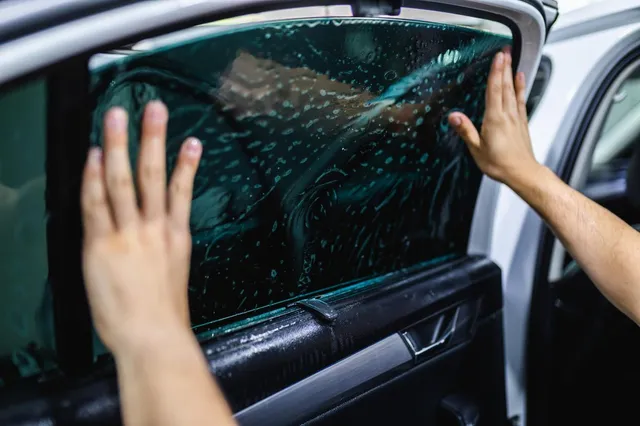How window tinting Can Help Reduce Glare and Boost Comfort
Discovering the Various Sorts Of Home Window Color for Cars and Their Benefits

Colored Window Tint
Colored home window color is a prominent option amongst automobile proprietors seeking to enhance personal privacy and reduce glare while maintaining an elegant look. This kind of color is developed by integrating dye right into the sticky layer, which is after that put on the home windows of the lorry. The key charm of colored home window tint depends on its ability to provide a visually pleasing appearance without compromising functionality.
Among one of the most substantial benefits of dyed home window color is its capacity to block hazardous UV rays, aiding to safeguard both passengers and the car's interior from sunlight damages. Additionally, this color efficiently decreases glow, adding to a more comfortable driving experience, specifically throughout intense daytime problems. The growing of window color additionally includes a layer of privacy, making it a lot more challenging for outsiders to see inside the vehicle.
Nevertheless, it is necessary to keep in mind that while dyed window tint provides countless benefits, it may not provide as much heat denial as other sorts of colors. Additionally, its long life can be influenced by exposure to long term sunlight, possibly resulting in fading gradually. On the whole, dyed window color stays a preferred choice for those prioritizing aesthetics and standard sunlight defense.
Metalized Home Window Tint
Metalized window tint stands for an innovative option for cars and truck proprietors looking to boost both performance and aesthetic appeals. One of the main advantages of metalized window color is its premium warmth denial capacities, which can considerably decrease the indoor temperature of an auto.
Furthermore, metalized tints supply boosted resilience contrasted to colored movies, making them resistant to fading and damaging. This long life ensures that the color keeps its effectiveness and appearance with time, giving long-term worth.
In addition, metalized home window color can boost personal privacy and safety by making it extra tough for outsiders to see inside the vehicle. The reflective quality of the color can also deter potential theft, as belongings are much less visible (window tinting). While it may conflict with some electronic signals, such as GPS or cellular phone reception, the general advantages make metalized window tint a compelling choice for lots of car owners
Ceramic Home Window Color
Providing advanced innovation and unmatched performance, ceramic window color has become a top selection for critical automobile owners. This cutting-edge film is made up of advanced ceramic fragments that supply significant warmth being rejected while maintaining clearness and presence. Unlike standard colors, ceramic home window tint does not rely upon metal or dye, which can hinder electronic signals from gadgets such as general practitioner and cell phones.
Among the standout advantages of ceramic home window color is its exceptional UV protection. It blocks up to 99% of unsafe ultraviolet rays, consequently securing both the car's here inside and its occupants from sunlight damage. In addition, this kind of color enhances personal privacy without jeopardizing exposure, making it a practical choice for day-to-day motorists and high-end vehicles alike.
Ceramic window color likewise boasts durability; it is resistant to fading and damaging, ensuring long-lasting efficiency. Furthermore, its non-reflective nature suggests it does not create glow, adding to safer driving conditions. For those seeking a premium color solution that combines aesthetic appeals with capability, ceramic window tint stands out as an exceptional choice, delivering improved convenience and security on the road
Carbon Home Window Tint
When it comes to home window tinting alternatives, carbon window tint has obtained popularity for its blend of performance and affordability. This sort of tint is made up of carbon bits, which offer a distinctive matte coating that improves the aesthetic charm of vehicles. One of the main benefits of carbon home window color is its capacity to obstruct a significant quantity of hazardous UV rays, shielding both the lorry's inside and its owners from skin damages and fading.
In addition, carbon window color uses superb heat denial residential or commercial properties, lowering the requirement for extreme a/c and boosting fuel performance. Unlike colored tints, carbon colors do not discolor with time, keeping their efficiency and look for many years. This sturdiness makes them a sensible selection for auto proprietors looking for lasting worth.
Furthermore, carbon home window tint is non-metalized, which means it does not interfere with digital signals, making it ideal for lorries geared up with GPS, Bluetooth, and other wireless technologies. The balance of expense, performance, and visual charm has established carbon home window color as a favored choice for lots of vehicle proprietors. Eventually, it functions as a dependable solution for those looking to enhance comfort while making certain design.
Factory Color
Factory color, additionally understood as OEM tint, describes the tinting that is related to automobile windows during the production process. This type of color is generally integrated right into the glass itself, using a consistent look and constant degrees of shading across all home windows. The main purpose of manufacturing facility tint is to decrease glow and improve passenger comfort while offering a degree of UV protection.

While factory color offers fundamental advantages, it may not give the very same level of warmth being rejected or personal privacy as higher-grade aftermarket colors. Therefore, car proprietors looking for enhanced efficiency may consider extra tinting options, while still valuing the visual appeal and capability manufacturing facility tint offers.
Conclusion

Nevertheless, it is important to keep in mind that while colored window tint supplies various advantages, it may not offer as much heat being rejected as other types of tints. For those looking for a premium tint solution that integrates appearances with capability, ceramic window color stands out as a premium option, supplying enhanced convenience and defense on the roadway.
When it comes to window tinting choices, carbon home window tint has actually gained appeal for its blend of efficiency and price.Factory tint, additionally known as OEM color, refers to the tinting that is used to vehicle windows during the manufacturing process. The exact level of tint can differ depending on the vehicle producer and version, with some automobiles featuring more considerable color on rear home windows than on front home windows.